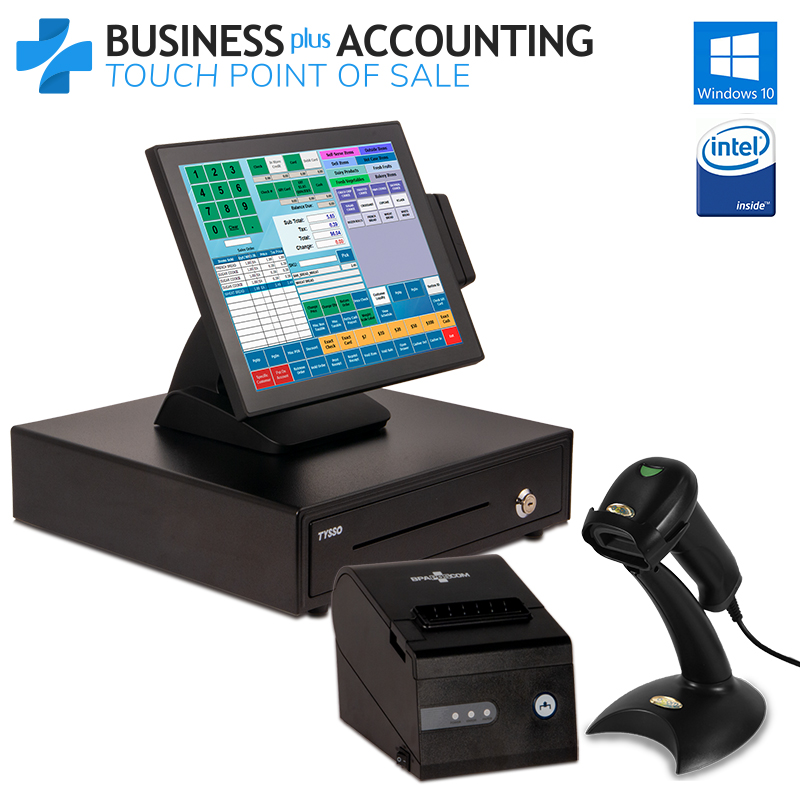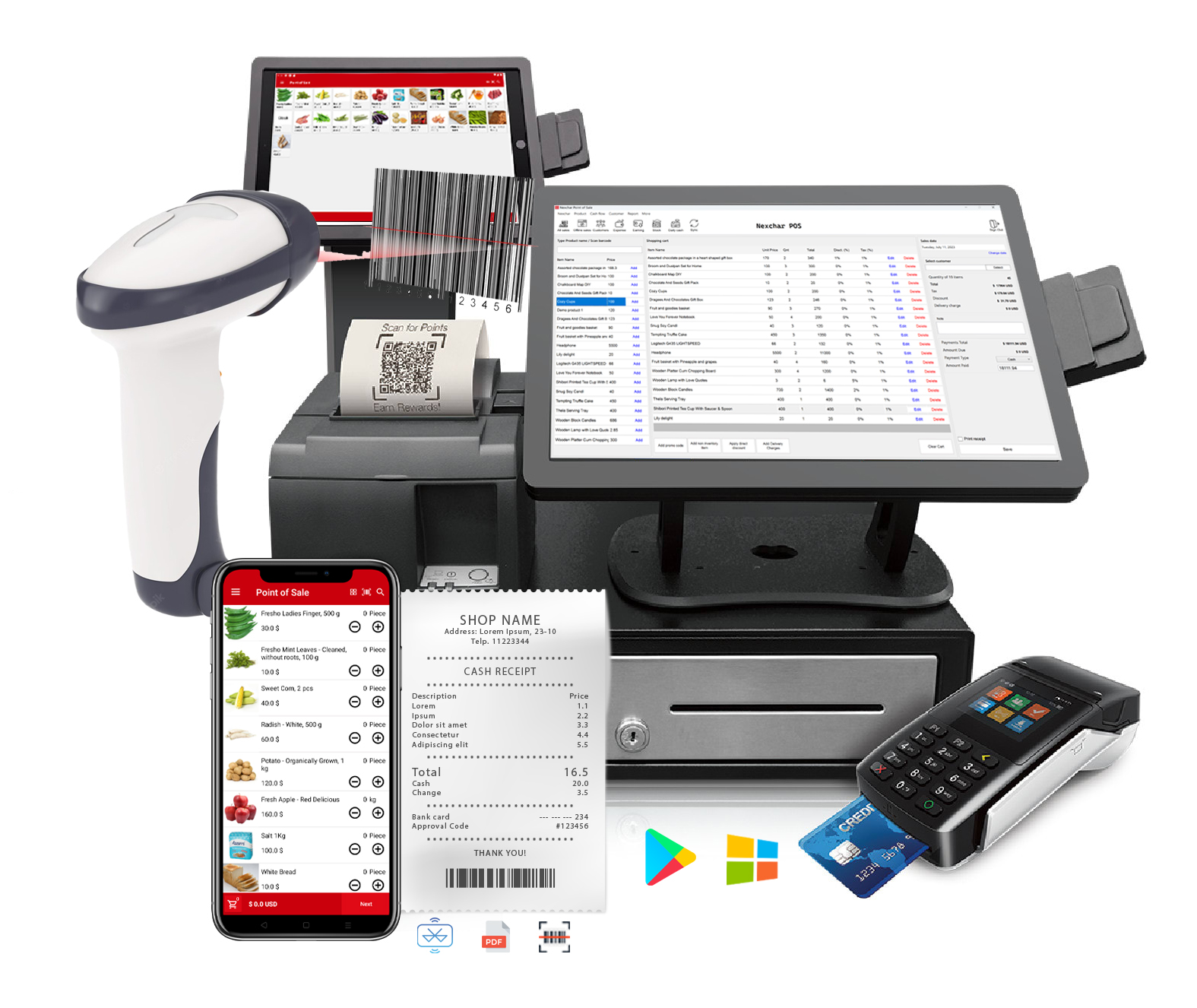POS System for Liquor Store: The upcoming of Sales Platforms in the Digital Age
POS System for Bookstore: Our Retail Deal Platform Improves Sales And Stock Management Efficiently
History and Advancement of Point Of Sales Systems
Have you ever stopped to wonder how the modern-day Point Of Sales System came to be? It's a journey that weaves through years of development, showing not just technological leaps however also the changing rhythm of commerce itself. Imagine a busy general store in the late 19th century-- sales register clattering, clerks scribbling down sales in ledgers. This was the modest beginning of what would become a sophisticated ecosystem of retail technology.
The Mechanical Origins

The first trigger fired up in the late 1800s with the invention of the mechanical money register. This device was more than just a box to hold cash; it was a tool developed to minimize theft and improve deal precision. Photo a store owner pulling a lever, hearing the pleasing "ka-ching" sound, indicating a documented sale. It's interesting how this basic mechanical device laid the groundwork for the sales tracking abilities we now consider granted.
Electronic Transformation and Digital Dawn
Quick forward to the mid-20th century, and the scene changes drastically. Electronic parts began changing gears and springs. All of a sudden, sales data might be recorded digitally, changing how organizations kept track of stock and consumer behavior. Can you imagine the leap from punch cards to touchscreen user interfaces? This transition didn't just speed things up; it opened a new world of data analytics, making it possible for merchants to expect patterns and customize their offerings.
Key Turning Points in POS Evolution
- Mechanical sales register: Late 1800s, foundational tool for transaction precision.
- Electronic signs up: Mid-1900s, introduced digital sales recording.
- Barcode scanners: 1970s, automated product recognition, reducing human error.
- Integrated software application systems: 1990s, merged sales, stock, and customer management.
- Cloud-based POS: 2000s onward, made it possible for remote gain access to, real-time data syncing, and scalability.
The Human Touch in a Digital Age
Some doubters ask: with all this automation, do we lose the personal connection at checkout? But here's a twist-- contemporary POS systems really empower staff to engage more meaningfully with clients by releasing them from tedious manual jobs. I recall a small boutique where the cashier used a tablet-based POS, effortlessly handling inventory while talking with customers about their choices. The technology wasn't a barrier; it was a bridge.
| Age | Technology | Impact |
|---|---|---|
| Late 1800s | Mechanical Cash Register | Lowered theft, improved sales accuracy |
| Mid 1900s | Electronic Registers | Digitized sales tape-recording |
| 1970s | Barcode Scanners | Faster checkout, decreased mistakes |
| 1990s | Software application Combination | Unified sales and stock management |
| 2000s+ | Cloud-Based Systems | Real-time information, scalability, remote access |
Looking back, the evolution of the Point Of Sales System is not just a tale of innovation-- it's a saga of adjusting to the pulse of retail, fulfilling challenges, and reshaping the consumer experience. Next time you see a smooth checkout, remember the winding course that brought us here.
Unloading the Vital Parts of a POS System
Every efficient Point Of Sales System depend upon a thoroughly orchestrated ensemble of hardware. Picture a busy café where orders fly in thick and quick-- the cash drawer snaps shut, the receipt printer hums, and the touchscreen glows with each transaction. This symphony of gadgets is what keeps the sales register ringing and POS System for Vape Shop the business flowing.
Core Hardware Elements
- Touchscreen Monitor: The maestro directing the POS experience, permitting quick input and seamless navigation.
- Receipt Printer: The concrete proof of purchase, crucial for customer trust and record-keeping.
- Money Drawer: The protected vault for physical money, typically ignored but crucial for handling money deals.
- Barcode Scanner: Speeds up checkout by instantly equating product codes to rates.
- Consumer Display: Enhances openness by revealing consumers their billed items and overalls in real-time.
But what about the less attractive, yet important elements like the POS terminal CPU!.?. !? It's the brain behind the curtain, processing information with accuracy. Without a robust processor, even the sleekest touchscreen ends up being a sluggish bottleneck.
Specialized Hardware for Retail vs. Hospitality
| Component | Retail Use | Hospitality Use |
|---|---|---|
| Receipt Printer | High-speed thermal printers for fast checkouts. | Cooking area printers to relay orders straight to cooks. |
| Cash Drawer | Sturdy with numerous compartments. | Smaller, frequently integrated with mobile POS. |
| Barcode Scanner | Necessary for stock and pricing accuracy. | Less typical; replaced by table numbers or order tickets. |
One common stumbling block? Incorporating all these gadgets so they interact flawlessly. A lagging printer or an unresponsive touchscreen can spiral into long queues and frustrated clients. The essential lies in picking hardware with proven interoperability and comprehending the environment where the POS will run.
Expert Tips for Ideal Hardware Selection
- Focus on resilience: Hardware sustains constant use; select components ranked for high deal volumes.
- Examine compatibility: Make sure peripherals sync easily with your POS software application to prevent glitches.
- Think ergonomics: For instance, a well-placed barcode scanner can speed up checkout substantially.
- Consider future scalability: Modular hardware allows you to add or switch elements as your business grows.
- Don't undervalue power supply requires; a trusted UPS can prevent data loss during failures.
Have you ever saw how a simple money drawer jam can freeze an entire checkout line? It's these relatively minor hiccups that underscore the value of selecting hardware built for your specific retail or hospitality rhythms. When the elements agree, deals flow like a well-conducted orchestra-- smooth, speedy, and pleasing.
Opening the Software Application Features That Specify a POS System
Envision standing at a bustling checkout, the line stretching behind a client with an armful of products. The last thing you want is for your POS software to crawl or overlook a discount. That's why comprehending the fundamentals of software performances can turn chaos into structured efficiency.
Core Functionalities That Make or Break the Experience
- Stock Management: Real-time tracking isn't just a buzzword. It's the backbone that prevents overselling or stockouts. Advanced POS systems sync stock instantly, upgrading across channels quickly.
- Sales Reporting & & Analytics: Numbers inform stories. However do your reports reveal surprise patterns like peak buying hours or which item packages enhance earnings? Deep-dive analytics change raw information into actionable insight.
- Employee Management: Clock-ins, commissions, and gain access to controls-- these features secure your operation and motivate your personnel with accuracy.
- Customer Relationship Management (CRM): Beyond transactions, terrific POS software customizes client experiences, capturing preferences to customize promotions that in fact work.
Specialist Tips for Harnessing POS Functionalities
- Integrate with Payment Gateways Efficiently: Not all combinations are produced equal. Select systems offer native support for multiple payment types, consisting of contactless and mobile wallets, minimizing checkout friction.
- Leverage Cloud Abilities: Think of accessing your sales control panel from a beach or a conference room. Cloud-based POS systems supply flexibility and catastrophe strength that local-only setups absence.
- Customize User Roles: Granular authorization settings avoid accidental information breaches and empower personnel with the right tools without overwhelming them.
- Automate Regimen Tasks: Set reorder points or schedule daily sales summaries to release up time for strategic decisions instead of mundane tasks.
Table: Comparing Essential vs. Advanced POS Software Application Features
| Function | Necessary | Advanced |
|---|---|---|
| Stock Updates | Manual or periodic sync | Real-time multi-location sync |
| Sales Reports | Basic everyday summaries | Customizable, predictive analytics |
| Payment Processing | Basic credit/debit | Contactless, mobile wallets, split payments |
| Consumer Information | Fundamental purchase history | Behavioral insights and targeted marketing |
Why Some Functions Slip Under the Radar
Many merchants focus on the glossy front-end functions, however what about the silent warriors-- like data synchronization latency or the speed of the user interface!.?.!? A sluggish system can frustrate workers and consumers alike, spiraling wait times and errors. Ever seen a line grow since the POS froze? It's a lesson in why performance tuning is just as essential as function lists.
Ask yourself: is your POS simply a sales register replacement, or an effective tool developed to enhance your entire sales process? The distinction lies in how deeply you understand and make use of the software's abilities.
Fortifying Security in POS Transactions
Have you ever questioned what takes place behind the drape when you swipe your card at a Point Of Sales System!.?.!? The unnoticeable dance of file encryption and tokenization safeguards your information in manner ins which often go unnoticed. Not all systems promote these requirements equally. The maze of securing cardholder data is more than simply a checkbox; it's a vital cornerstone that can make or break trust in any retail environment.
Think about the subtle nuances that separate a robust POS from a susceptible one. Data file encryption isn't merely about encoding details-- it's about developing a solid fortress around sensitive information throughout transmission and storage. Without this, hackers can make use of weak links, turning a simple deal into a disastrous breach.
Secret Aspects to Guarantee Compliance and Security
- End-to-end encryption (E2EE): Encrypts information from the minute of swipe or tap up until it reaches the payment processor, rendering obstructed details useless.
- Tokenization: Replaces delicate card information with unique tokens, preventing exposure of actual information throughout processing.
- PCI DSS adherence: The Payment Card Industry Data Security Standard isn't just a guideline however a plan for protecting payment communities.
- Routine security audits: Periodic checks recognize vulnerabilities before harmful stars do.
- Firmware stability: Guaranteeing that POS devices run only licensed software to prevent tampering or malware injection.
Common Oversights That Undermine POS Security
Many ignore the risk posed by out-of-date software application variations. Think of a timeless tale where a hacker exploits a recognized vulnerability patched months ago-- it's like leaving the front door wide open while boasting about your security system. Moreover, weak credential management often leads to unauthorized gain access to; utilizing default passwords or overlooking multi-factor authentication can turn a fortress into a sieve.
Specialist Tips for Enhancing Deal Security
- Carry out multi-layered authentication to restrict access to POS management consoles.
- Guarantee real-time tracking and alert systems are in location to capture any anomalous activity swiftly.
- Train personnel rigorously on spotting phishing attempts and social engineering methods that target POS vulnerabilities.
- Adopt network segmentation so that POS terminals run on isolated networks, restricting contagion from other jeopardized gadgets.
| Security Feature | Function | Professional Insight |
|---|---|---|
| End-to-End File encryption | Safeguards data throughout all deal stages | Often undervalued but vital for preventing man-in-the-middle attacks |
| Tokenization | Changes delicate info with tokens | Lowers scope of PCI DSS compliance by limiting direct exposure |
| Firmware Validation | Avoids unauthorized code execution | Regular updates and checks are non-negotiable for POS stability |
Eventually, security and compliance in POS deals are not fixed states however vibrant procedures. They require vigilant adaptation and a proactive mindset. Have you taken a look at whether your system's defenses adjust as promptly as the hazards evolve? Ignoring this can turn a single transaction into a gateway for breaches that ripple across an entire operation.
